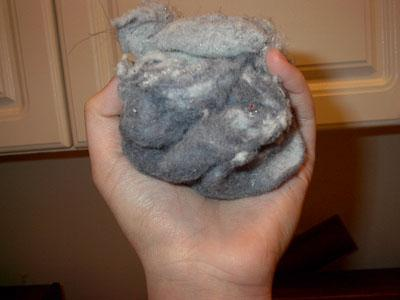RAS, RAF, MEK, MAPK... or something like that. That's what I remember as being the chain of gene activation to activate an oncogene leading to cancer (P53 getting its ass kicked) . No I can't remember the details but these activation/interactions form a tree of what gene up or downregulates the function of another and it's quite a complicated part of genetics and bioinformatics. But I found a website recently that I hadn't seen before and thought of sharing it because apart from getting a nice little description of what the gene does in different species, it has nice spider diagrams like this showing gene relationships:
http://string-db.org/
A search example, PAX6: http://string-db.org/newstring_cgi/show_network_section.pl?caller_identity=expasy_api&identifier=pax6
If you click continue at the bottom of that page you see the diagram.
Friday 29 July 2011
Wednesday 13 July 2011
Ladybird vs. Aphid.... vs. Spider?
I thought Ladybirds ate Aphids and kept their population down. But apparently that isn't the whole truth! Check this out:
I don't know about you but I really do wonder if this is at all true. The roles of both the spider and the Ladybird seem so passive. I reckon there's something missing in the equation.
http://www.bbc.co.uk/nature/life/Coccinella_septempunctata#p0039ryj
I don't know about you but I really do wonder if this is at all true. The roles of both the spider and the Ladybird seem so passive. I reckon there's something missing in the equation.
http://www.bbc.co.uk/nature/life/Coccinella_septempunctata#p0039ryj
Tuesday 5 July 2011
Belly button fluff - bacterial haven

The human navel should be designated as a bacterial nature reserve, it seems. The first round of DNA results from the Belly Button Biodiversity project are in, and the 95 samples that have so far been analysed have turned up a whopping total of more than 1400 bacterial strains. In 662 cases, the microbes could not even be classified to family, "which strongly suggests that they are new to science", says team leader Jiri Hulcr of North Carolina State University in Raleigh.
The project was conceived as a light-hearted exercise in science communication, but is making a serious contribution to the understanding of microbial diversity. Since New Scientist wrote about the initiative in April, samples of bacteria taken when volunteers swabbed their navels with Q-tips have had their "DNA barcodes" read by sequencing the gene for 16S ribosomal RNA, widely used in studies of bacterial evolutionary relationships.
My own sample was among 10 per cent of those in the first round in which reactions to amplify the DNA present failed - so the next installment of the comparison of my belly button biome with that of fellow science writer Carl Zimmer will have to wait for another day. Still, Zimmer has already been having some fun with his results, finding among other things that his belly button hosts Georgenia bacteria, previously found in Asian soils.
Results like this reflect our ignorance of microbial diversity, Hulcr suggests: the inhabitants of our navels seem weird because biologists haven't sampled sufficiently extensively to document the full diversity of microbial life in a variety of habitats. He likens reactions to the first round of belly button results to the astonishment of the first European explorers seeing African big game - which today seem commonplace. "Now you're expecting rhino and elephants," Hulcr says.
Also, identifying bacteria to species is difficult. Noah Fierer's team at the University of Colorado, Boulder, classified them into "operational taxonomic units" having 16S ribosomal RNA gene sequences that differed by 3 per cent or less. Apply this standard to mammals, Hulcr explains, and dogs and cats would be lumped together. It means that a "match" between a belly button strain and a species known from the deep ocean, for instance, may actually represent two microbes separated by several million years of divergent evolution.
Although the total number of strains recorded was large, the results so far indicate that a small group of about 40 species accounts for around 80 per cent of the bacterial populations of our belly buttons. "It is tempting to think of the abundant species as the good, core biome of bacteria and the rare ones as transients, struggling to take hold, sometimes at our expense," says Rob Dunn, author of The Wild Life of Our Bodies, and head of the lab in which Hulcr works.
Confirming that theory will require studies on a new scientific frontier: belly button ecology.
Source: http://www.newscientist.com/blogs/shortsharpscience/2011/06/peter-aldhous-san-francisco-bu.html
Also see: http://idle.slashdot.org/story/09/03/02/1742219/Science-Unlocks-The-Mystery-Of-Belly-Button-Lint
Subscribe to:
Posts (Atom)
